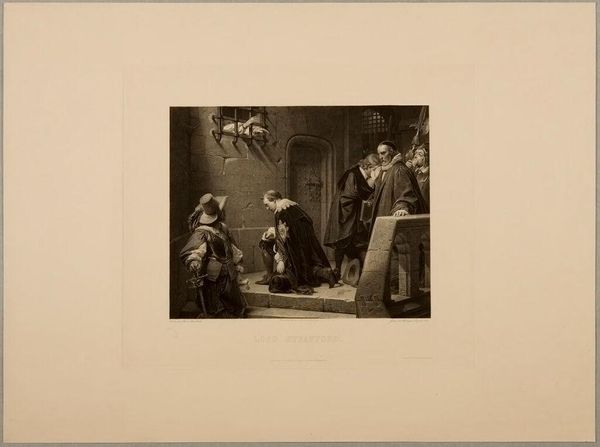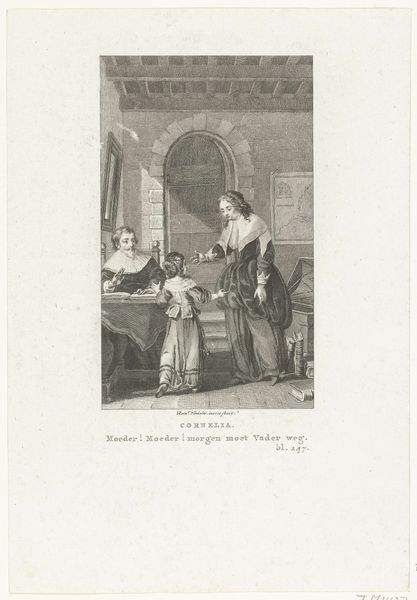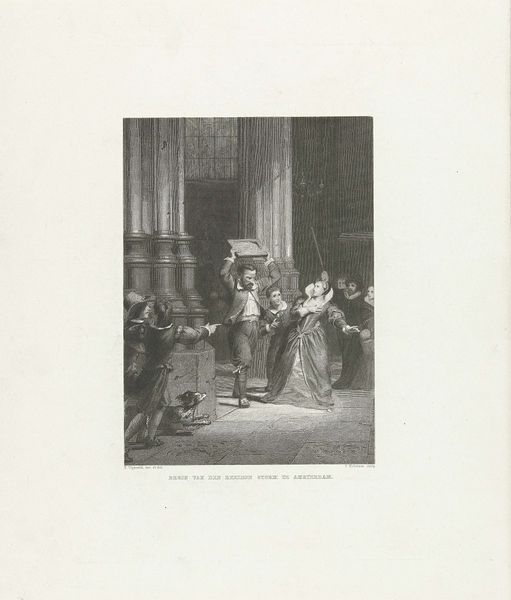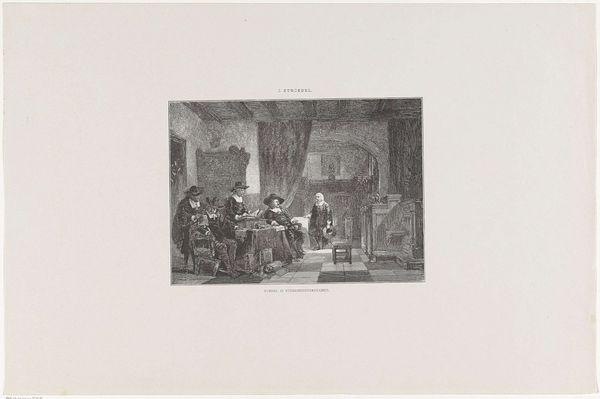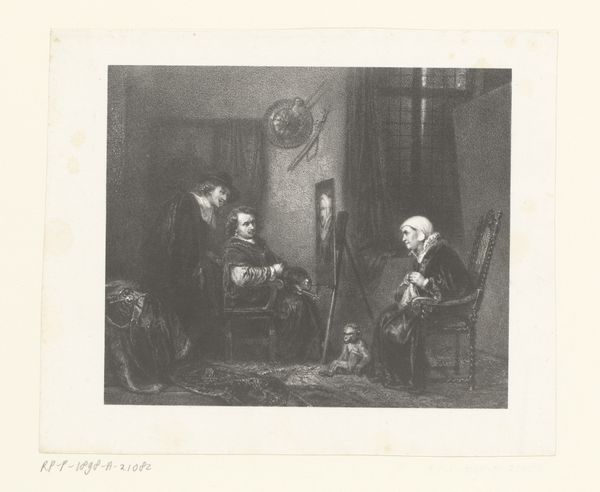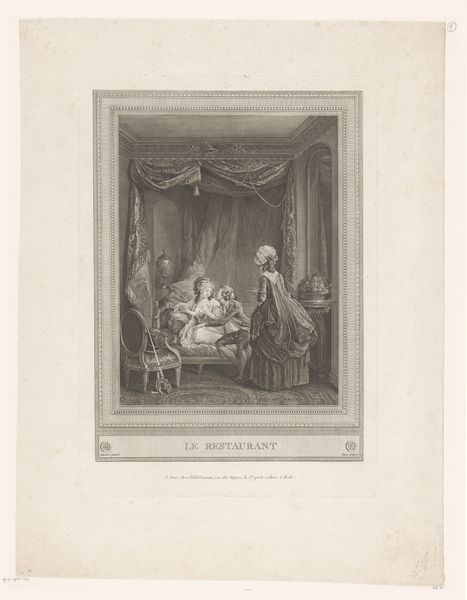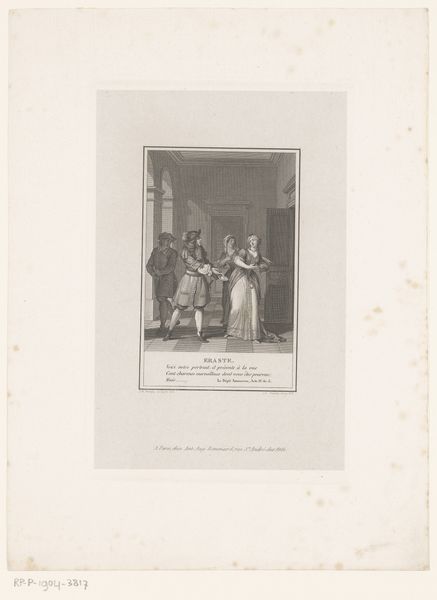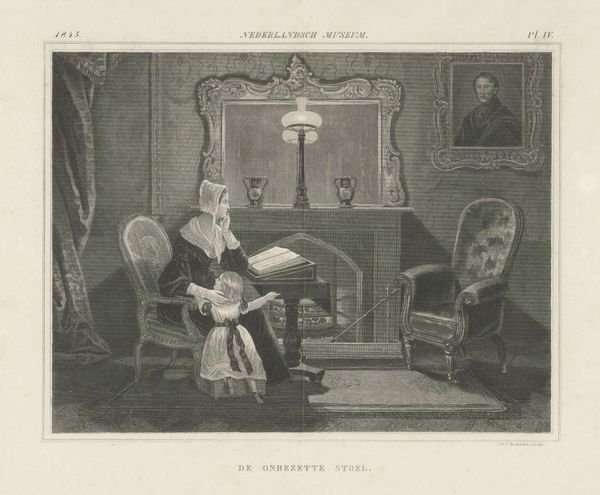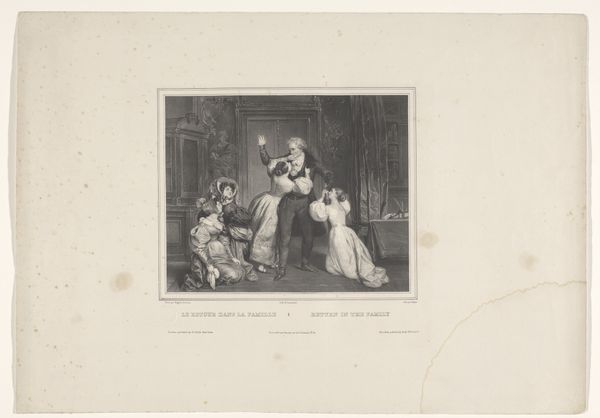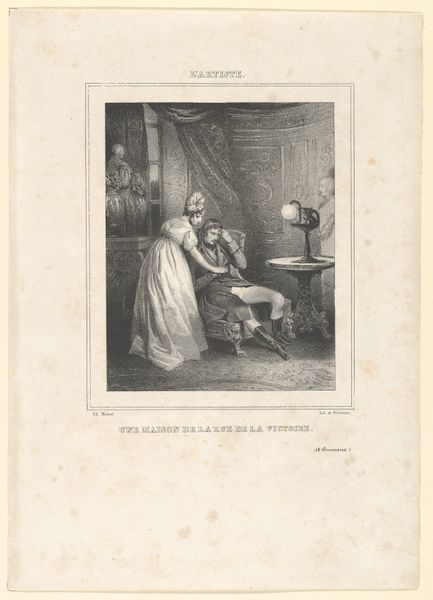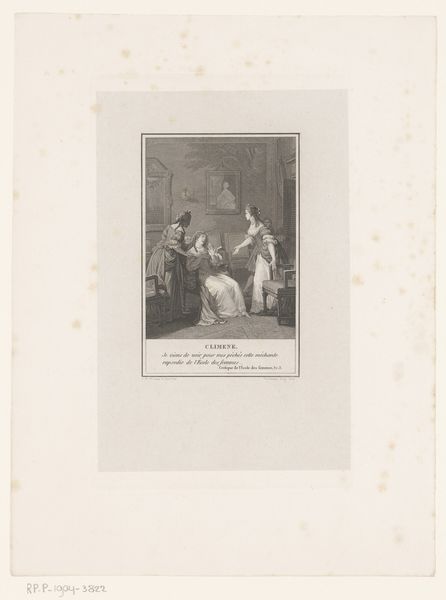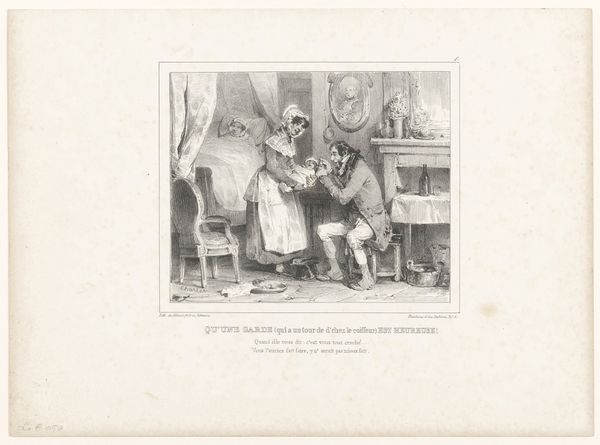
Dimensions: height 497 mm, width 418 mm
Copyright: Rijks Museum: Open Domain
Curator: Dirk Jurriaan Sluyter created this print entitled "Onheilstijding," sometime between 1860 and 1886. The Rijksmuseum is where it now resides. My first impression is its subdued drama—it speaks of domestic upheaval yet somehow maintains its stillness. Editor: It’s incredibly dense, formally. Look at how the artist uses light and shadow. The engraving is predominantly in monochrome. And the composition seems claustrophobic. What narrative does this evoke? Curator: Historically, prints like these, particularly engravings, played a pivotal role in disseminating narratives across a wide audience. Genre paintings like these capture moments of everyday life—or, rather, significant life events. The narrative here, it seems, centers around a widow of an officer who just received devastating news of some kind, hence the name. It presents death within the domestic space, reflecting shifting 19th-century sensibilities toward mourning. Editor: See how Sluyter emphasizes the visual contrast, the interplay between order and disorder. Note how the sword echoes the boy's rigid stance, the overturned chair mirrors the woman’s collapse. He orchestrates emotional expression meticulously through these contrasting formal arrangements, using this precise organization to evoke deep melancholy. Curator: And notice the significance of setting. The bust above the mantel and the portrait, likely of the deceased officer, underscores the legacy and the presence of military figures in this domestic scene. We are seeing this domestic drama unfold against a very particular historical backdrop: military, patriarchal, very masculine. The painting is thus embedded within power dynamics, reflecting contemporary ideas surrounding women. Editor: I'm intrigued by the relationship between figure and ground. Consider the detail placed on faces and figures, which stand apart from less well-defined spaces behind. But ultimately the light and shadows draw you into an awareness of how the picture operates, its self-reflexivity as an object for thought, not simply a depiction. Curator: I agree. We are given the chance to think through social changes. Editor: Reflecting on its formalism highlights the constructed, mediated nature of such images. Curator: Yes, which underscores that images have a critical public role and are embedded in society.
Comments
No comments
Be the first to comment and join the conversation on the ultimate creative platform.
